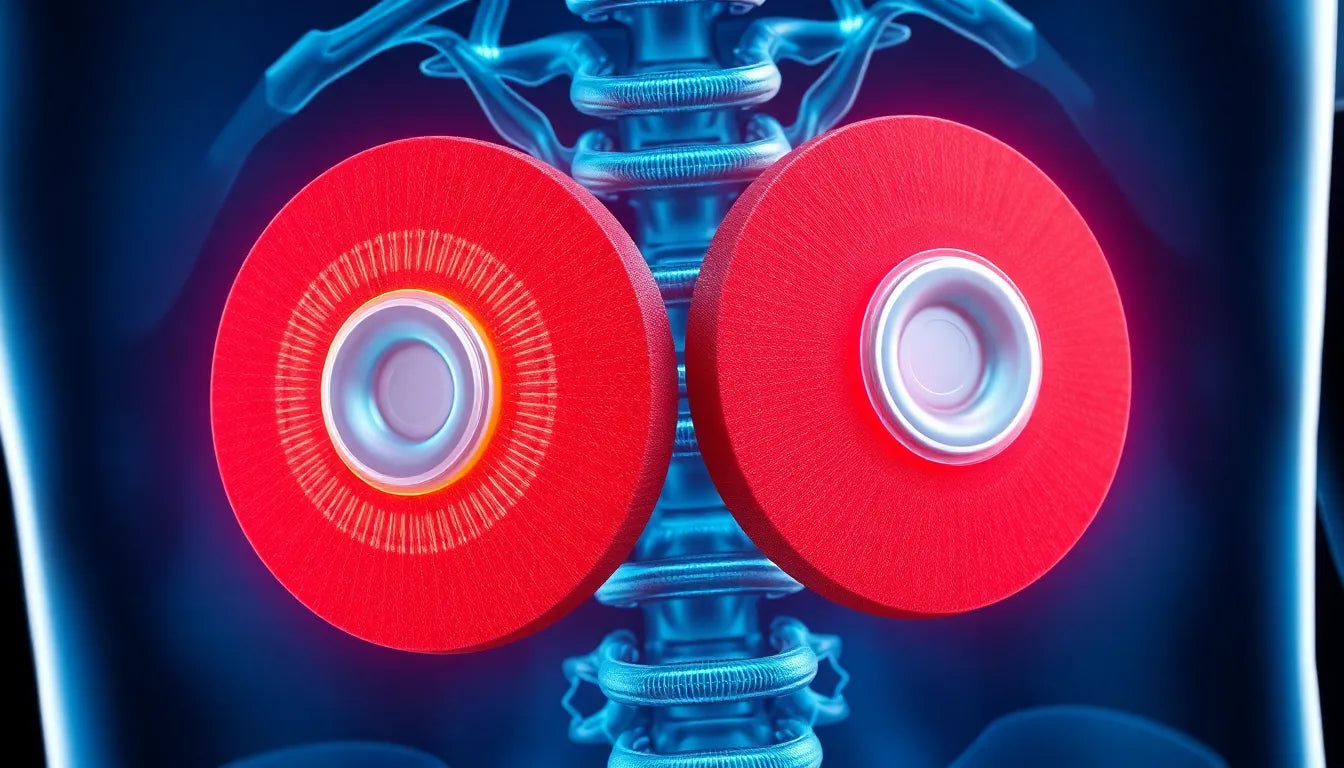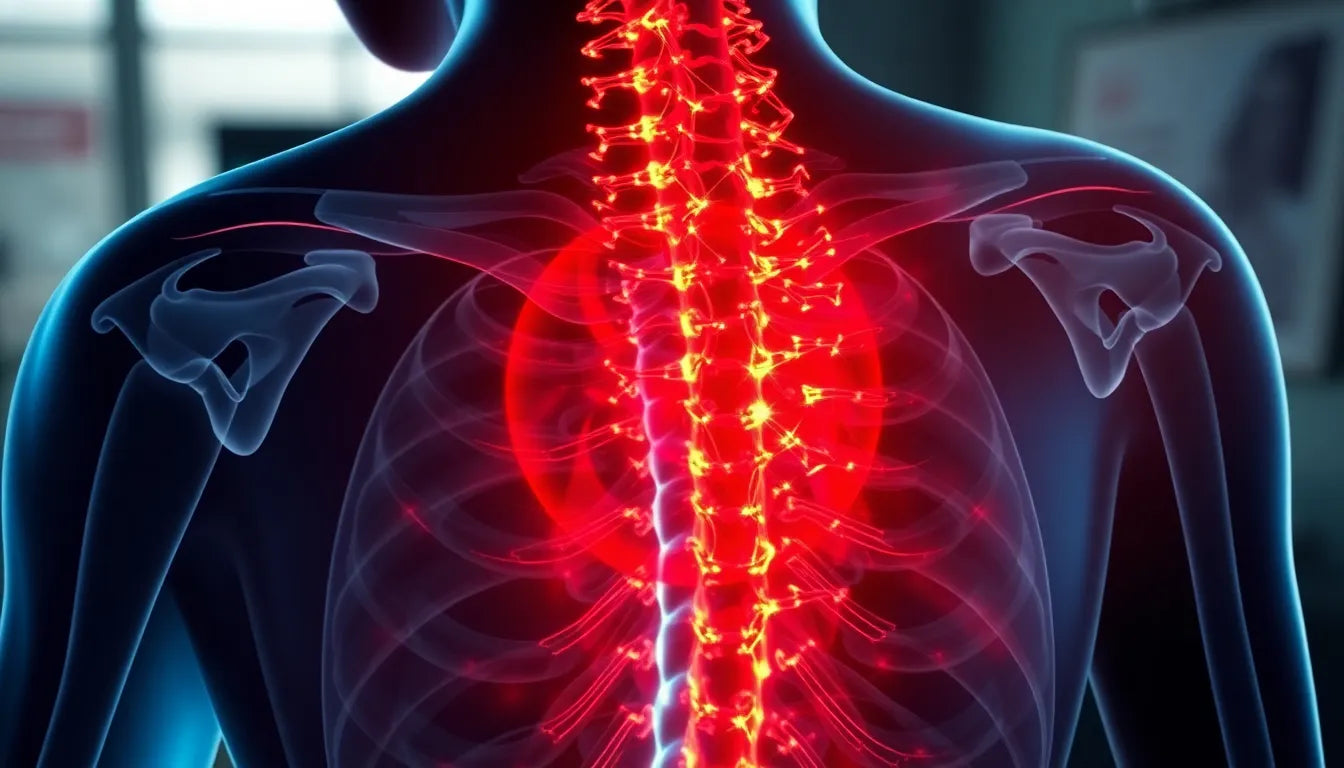Understanding the complexities of a herniated disc is essential for anyone experiencing back pain or related symptoms. A herniated disc occurs when the soft center of a spinal disc pushes through a crack in the tougher exterior casing. This condition can lead to pain, numbness, and weakness, often affecting the lower back or neck. The prevalence of herniated discs is significant, especially among adults aged 30 to 50, and it can have a profound impact on daily life, limiting mobility and the ability to perform routine activities.
importance of seeking herniated disc treatment
Seeking treatment for a herniated disc is crucial for several reasons. Left untreated, the condition can lead to chronic pain and further complications. Early intervention can alleviate symptoms, reduce inflammation, and improve overall quality of life. For many, the goal is not just to manage pain but to return to normal activities without discomfort. This blog post will explore various treatment options, from non-surgical methods to surgical interventions, providing a comprehensive guide to finding relief.
overview of herniated disc treatment options
The treatment options for herniated discs are diverse, catering to different severities and individual needs. Non-surgical treatments often serve as the first line of defense and include rest, activity modification, physical therapy, and medication. These approaches aim to reduce pain and inflammation while promoting healing. For those whose symptoms persist despite conservative measures, surgical options may be considered. Procedures like microdiscectomy and artificial disc replacement offer solutions when non-surgical methods prove insufficient. In the following sections, we will delve deeper into these treatments, exploring their benefits and potential outcomes.
non-surgical treatments for herniated discs
Non-surgical treatments are often the first step in managing a herniated disc, focusing on alleviating symptoms and promoting recovery without invasive procedures. These methods are particularly beneficial for those experiencing mild to moderate symptoms.
rest and activity modification
Initially, rest is crucial to allow the inflammation around the herniated disc to decrease. However, prolonged inactivity can lead to muscle weakness and stiffness, so it's essential to balance rest with gentle activity. Modifying activities to avoid movements that exacerbate pain is key. This may include avoiding heavy lifting, bending, or twisting that can further strain the back.
physical therapy
Physical therapy plays a pivotal role in the recovery process by strengthening the muscles that support the spine, enhancing flexibility, and improving overall posture. Therapists often design individualized exercise programs that may include stretching, strengthening, and aerobic exercises. For example, exercises like pelvic tilts, knee-to-chest stretches, and gentle yoga poses are commonly recommended to help alleviate pressure on the spinal nerves and improve mobility.
pain medication and injections
Medications are frequently used to manage pain and inflammation associated with a herniated disc. Non-steroidal anti-inflammatory drugs (NSAIDs) and muscle relaxants are commonly prescribed to reduce pain and muscle spasms. In cases where oral medications are insufficient, epidural steroid injections may be administered. These injections deliver steroids directly into the epidural space around the spinal nerves, providing temporary but significant relief from pain and inflammation.
alternative therapies
Alternative therapies offer additional avenues for managing herniated disc symptoms. Chiropractic care can help realign the spine, reducing nerve pressure and pain. Acupuncture, an ancient Chinese practice, involves inserting thin needles into specific points on the body to relieve pain and promote healing. Additionally, practices like yoga and Pilates can enhance flexibility and core strength, supporting spinal health. Integrating these therapies into a comprehensive treatment plan can offer holistic benefits, addressing both physical and mental well-being.
surgical treatments for herniated discs
While many individuals find relief through non-surgical methods, surgery may be necessary for those with severe symptoms or when conservative treatments fail. Understanding when surgery is appropriate and the options available is crucial for making informed decisions.
when is surgery necessary?
Surgery is typically considered when a herniated disc causes significant nerve compression leading to persistent pain, weakness, or numbness that does not improve with non-surgical treatments. Other indicators include loss of bladder or bowel control, which could suggest a more serious condition requiring immediate intervention.
common surgical options
Several surgical procedures are available for treating herniated discs, each with specific goals and benefits.
microdiscectomy
Microdiscectomy is a minimally invasive procedure aimed at removing the herniated portion of the disc to relieve pressure on the spinal nerves. This surgery involves small incisions and the use of a microscope, resulting in less tissue damage and a quicker recovery compared to traditional open surgery.
artificial disc replacement
In cases where the entire disc is damaged, artificial disc replacement may be considered. This procedure involves replacing the damaged disc with a synthetic one, preserving more natural movement compared to spinal fusion. The long-term benefits include maintaining spinal flexibility and reducing the risk of adjacent segment degeneration.
other surgical options
Additional surgical treatments include lumbar laminectomy, which involves removing part of the vertebra to relieve nerve pressure, and endoscopic discectomy, a less invasive technique using an endoscope to remove disc material. Spinal fusion, another option, involves fusing two or more vertebrae to stabilize the spine, often used when multiple discs are affected.
Recovery and rehabilitation after surgery
Following herniated disc surgery, recovery and rehabilitation are crucial to ensure optimal outcomes and a return to daily activities. The initial post-operative phase typically involves rest and limited movement to allow the surgical site to heal. Gradually, patients can engage in more activities as guided by their healthcare provider.
Physical therapy is a cornerstone of rehabilitation, focusing on restoring strength, flexibility, and range of motion. Therapists design personalized exercise programs to help patients regain function and prevent future injuries. Activities may include gentle stretches, strengthening exercises, and cardiovascular conditioning, all aimed at supporting the spine and enhancing overall recovery.
Comparing surgical and non-surgical treatments
When considering treatment options for a herniated disc, it's essential to weigh the effectiveness, risks, and benefits of surgical versus non-surgical approaches. Non-surgical treatments, such as physical therapy and medication, are often preferred as they pose fewer risks and typically involve a shorter recovery period. These methods are effective for many individuals, especially those with mild to moderate symptoms.
Surgical treatments, on the other hand, may be necessary for severe cases where non-surgical methods fail to provide relief. While surgery can offer significant benefits, such as immediate pain reduction and improved mobility, it also carries potential risks, including infection, nerve damage, and longer recovery times. Patients should consult with their healthcare provider to determine the most appropriate treatment based on their specific condition and health status.
| Treatment Option | Benefits | Risks |
|---|---|---|
| Non-Surgical | Less invasive, shorter recovery, fewer risks | May not be effective for severe cases |
| Surgical | Potential for immediate relief, effective for severe cases | Involves surgical risks, longer recovery |
Frequently Asked Questions
What causes a herniated disc?
A herniated disc can result from several factors, including aging, which causes discs to lose water content and become less flexible. Injury from lifting heavy objects improperly or sudden movements can also lead to disc herniation. Additionally, lifestyle factors such as obesity and sedentary habits can increase the risk.
How can I prevent a herniated disc?
Preventing a herniated disc involves maintaining a healthy spine through regular exercise, proper posture, and ergonomic practices. Strengthening core muscles, avoiding prolonged sitting, and using correct lifting techniques are essential in reducing the risk.
Are there any risks associated with surgical treatments?
Surgical treatments for herniated discs carry potential risks, including infection, bleeding, nerve damage, and complications from anesthesia. It's important to discuss these risks with a healthcare professional to make an informed decision.
How long does recovery take after herniated disc surgery?
Recovery time after herniated disc surgery varies depending on the type of surgery and individual health factors. Generally, patients can expect a recovery period of several weeks to a few months. Physical therapy and adherence to post-operative guidelines can significantly influence recovery speed and success.
Can a herniated disc heal on its own?
In some cases, a herniated disc can heal on its own with conservative treatments such as rest, physical therapy, and medication. These methods can help reduce inflammation and pain, allowing the body to repair itself over time. However, if symptoms persist or worsen, medical intervention may be necessary.


















